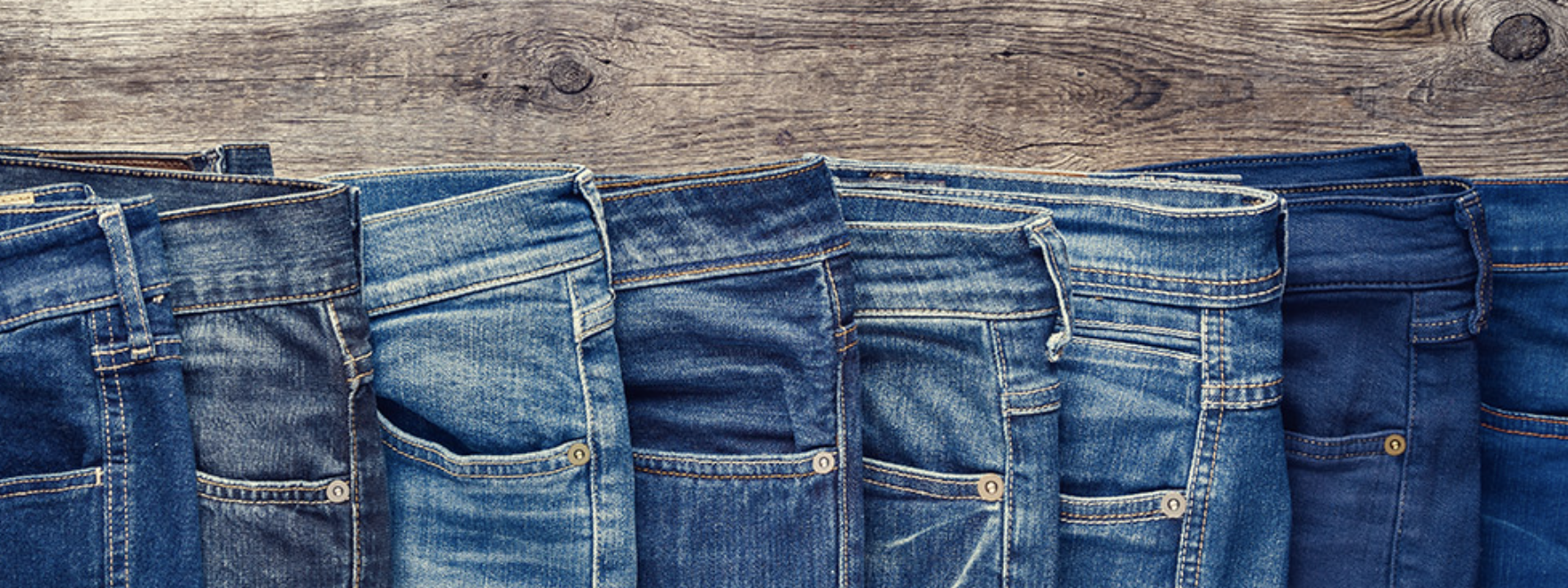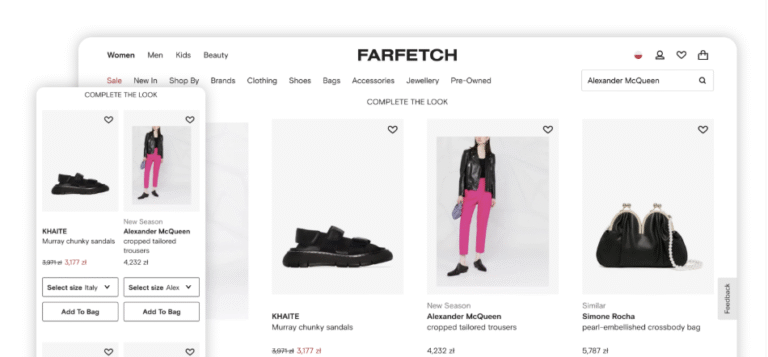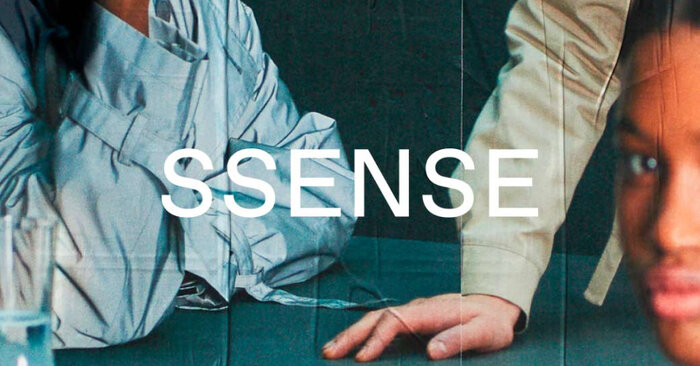Best 10 Denim Fabric Types Explained
Denim is far more than just your average blue jeans. It’s a cultural phenomenon, a fabric that’s evolved over decades to become an essential part of wardrobes worldwide.
Whether you’re chasing comfort, durability, or high fashion, there’s a denim type tailored for every need.
In this detailed guide, we break down the 10 best types of denim fabric, so you can pick the perfect one for your personal style.
Table of Contents
Introduction to Denim Fabric
A Brief History of Denim
The story of denim dates back to the late 1800s when Levi Strauss introduced sturdy jeans for American miners. Originally developed as a tough, rugged material to withstand harsh working conditions, denim quickly became popular across the world.
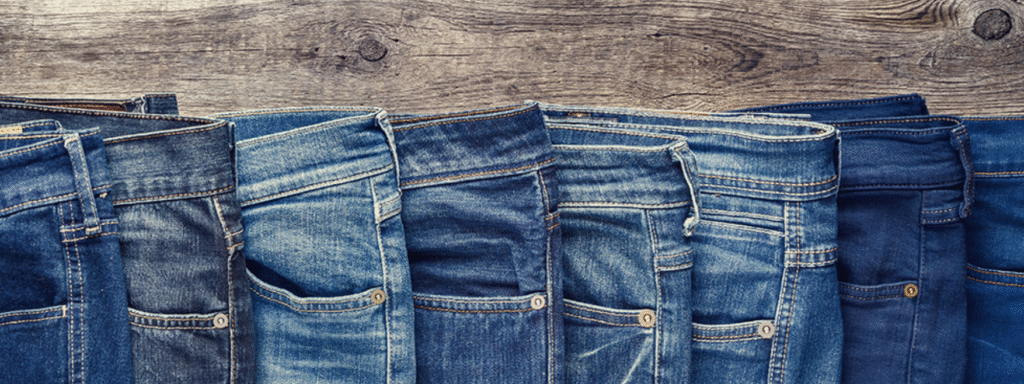
The name “denim” is believed to have originated from the French phrase “serge de Nîmes,” meaning fabric from Nîmes—a city in France known for textile production.
Back in the day, denim was strictly utilitarian. But over time, it took a wild turn into pop culture. From James Dean’s rebel look to the grunge wave of the ‘90s, denim has consistently reinvented itself. Today, it’s as likely to appear on a fashion runway as on a construction site.
Why Denim Remains a Timeless Fabric
Why does denim endure while other trends come and go? Because it balances form and function like no other fabric. It can be structured or soft, classic or edgy. It adapts. Plus, it’s a blank canvas—ready to be dyed, stretched, crushed, or distressed.
The versatility of denim has made it indispensable. You can dress it up with a blazer, or throw it on with sneakers. It’s democratic, too—found in budget brands and luxury lines alike. Whether it’s vintage selvedge or cutting-edge poly denim, the fabric always finds a way to stay relevant.
1. Raw Denim
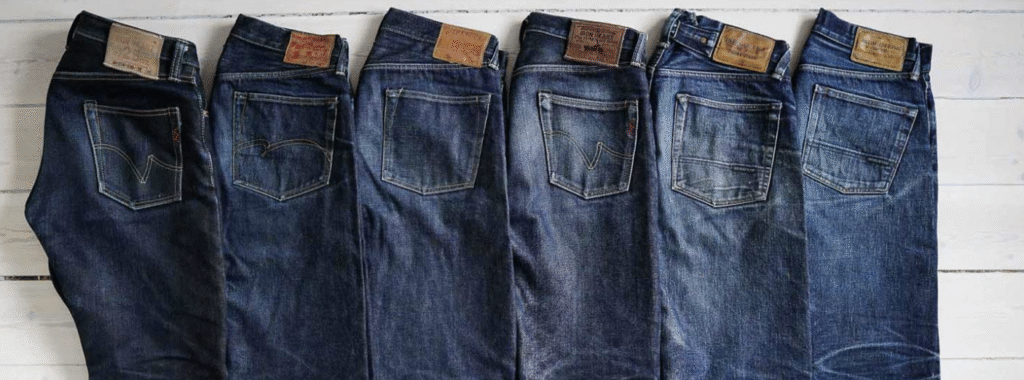
Characteristics and Texture
Raw denim is the real deal—unwashed, untreated, and completely unprocessed straight from the loom. That means it still has that deep indigo hue and stiff feel that denim purists adore.
It’s a blank slate that molds itself to your body over time, creating personalized fades and whiskers that no factory-distressed jeans can replicate.
What’s unique about raw denim is its ability to age like fine wine.
Every wear, every wash (if you wash it at all), adds character. It’s not meant to look perfect—it’s meant to look lived-in. The heavier weight, typically around 12–16 oz., adds to the long-lasting appeal.
Ideal Uses and Style Tips
Raw denim is perfect for those who want jeans that tell a story. They’re ideal for denim aficionados who take pride in breaking in their jeans the “right way.”
If you want to go full purist, avoid washing them for at least 6 months—though that’s up for debate among denim lovers.
Pair raw denim with boots or minimalist sneakers for a rugged, refined look. And remember: they’ll be stiff at first, but that’s part of the journey. Over time, they’ll soften and contour beautifully to your frame.
2. Selvedge Denim
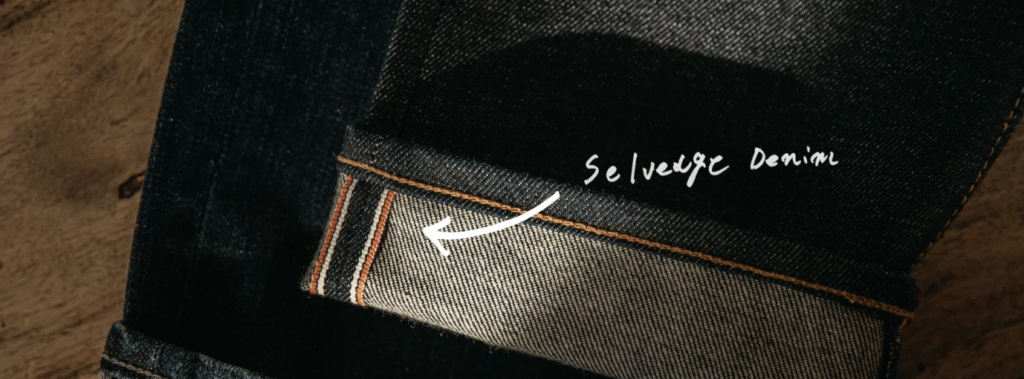
What Makes Selvedge Special
Selvedge (or selvage) denim is raw denim’s high-end cousin. The word “selvedge” comes from “self-edge,” referring to the fabric’s tightly woven edge that prevents unraveling. It’s created on vintage shuttle looms, which produce narrower, denser fabric with clean edges.
What makes selvedge so revered? It’s all about craftsmanship. The slow weave process means fewer jeans are made per yard, making them more exclusive. You’ll often see a distinct red or white line on the outseam when the cuff is rolled—that’s your selvedge ID.
How to Identify Authentic Selvedge
Genuine selvedge denim is easy to spot if you know what to look for. First, flip the cuff—if there’s a clean, tightly woven edge with colored thread (often red or white), it’s the real deal. You’ll also notice the fabric is more rigid and dense compared to mass-produced denim.
Want to make a statement? Cuff your jeans to show off the selvedge line. Match them with a chambray shirt or structured jacket for a smart-casual vibe. They’re not just pants—they’re a status symbol in the denim world.
3. Stretch Denim
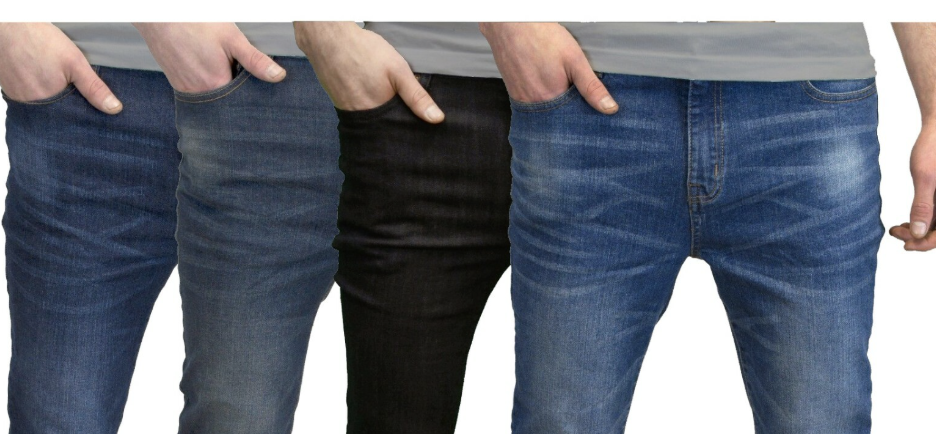
Blend Composition and Flexibility
Let’s be honest—not all denim is comfortable. That’s where stretch denim comes in. Usually made with 1–3% elastane or spandex blended into cotton, stretch denim offers a flexible, forgiving fit without sacrificing that classic denim look.
Perfect for skinny jeans and jeggings, stretch denim adapts to your movements. It’s the fabric of choice for modern denim brands that want to merge comfort with style. Thanks to the stretch, these jeans hug your body without pinching or sagging.
Who Should Wear Stretch Denim?
Stretch denim is a lifesaver for people who want comfort, mobility, and style in one. Whether you’re running errands, commuting, or just want to avoid the stiff feel of raw denim, stretch denim fits the bill.
This type of fabric works wonders for slim fits, high-rise cuts, and body-hugging designs. It’s especially great for women’s jeans, although men’s stretch options are rising in popularity too. Just make sure not to over-wash—they can lose their elasticity over time.
4. Crushed Denim
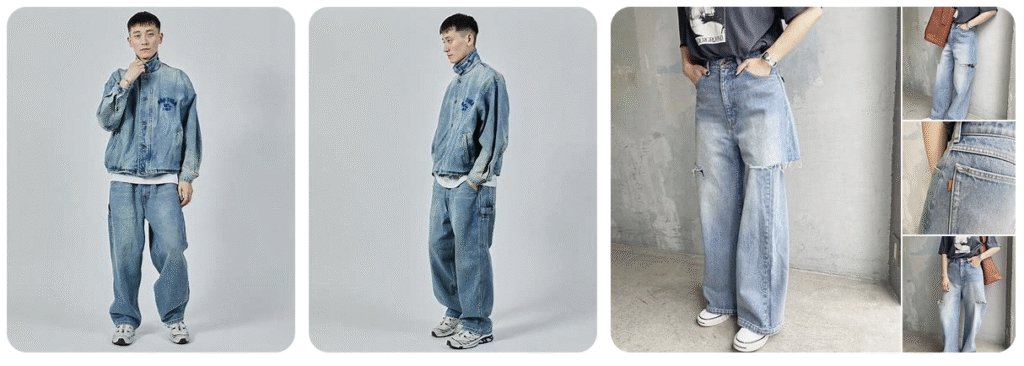
The Signature Look of Crushed Denim
Crushed denim is all about texture. With a wrinkled, lived-in appearance, this fabric is pre-treated to have a permanently crinkled surface. Think of it as a denim with attitude—a little rebellious, a little bohemian.
This denim doesn’t aim to be sleek; it thrives on imperfection. Each piece is intentionally creased in various patterns, offering a unique, almost sculpted look that’s perfect for those who love standout styles.
Styling Crushed Denim Right
Want to rock crushed denim the right way? Keep the rest of your outfit simple. Let the texture be the hero. A plain tee or oversized sweater works well, and you can dress it up with heels or keep it street-style with sneakers.
Perfect for artsy types or those who hate ironing, crushed denim carries a care-free vibe. It’s less common than other denim types, which makes it an excellent choice for fashion risk-takers looking to break the mold.
5. Acid Wash Denim
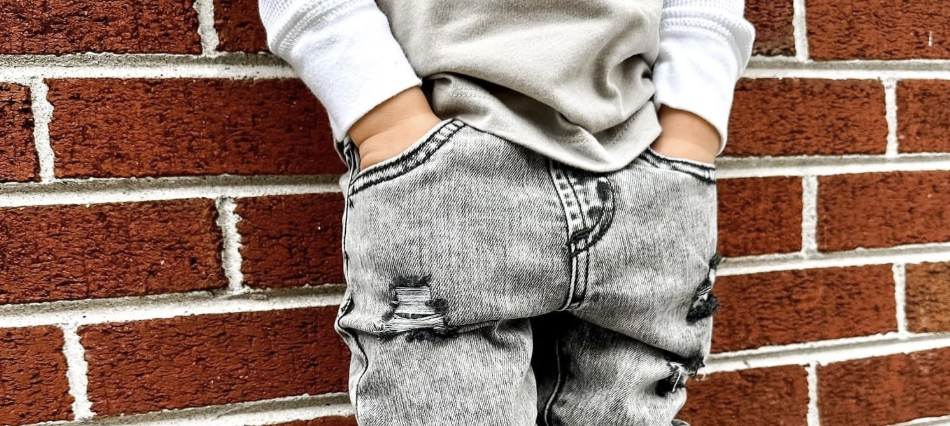
Origins of Acid Wash
Acid wash denim is a throwback to the ‘80s when punk rock and glam fashion collided. Originally made using pumice stones soaked in bleach, the process strips away the indigo dye in irregular patterns, giving it a marbled, vintage look.
This process was actually discovered by accident but became a runaway trend. Today’s versions use more sustainable and refined techniques but keep that distinctive faded contrast.
Modern Takes on a Vintage Favorite
You don’t have to look like an ‘80s rockstar to wear acid wash—though if you want to, go for it! Modern acid wash jeans come in all cuts, from boyfriend jeans to skinny styles, and pair well with minimal, neutral tops to balance the boldness.
Add a black leather jacket or distressed boots, and you’ve got an effortlessly edgy outfit. While not for everyone, acid wash is the perfect pick if you want your denim to make a statement.
6. Ecru Denim
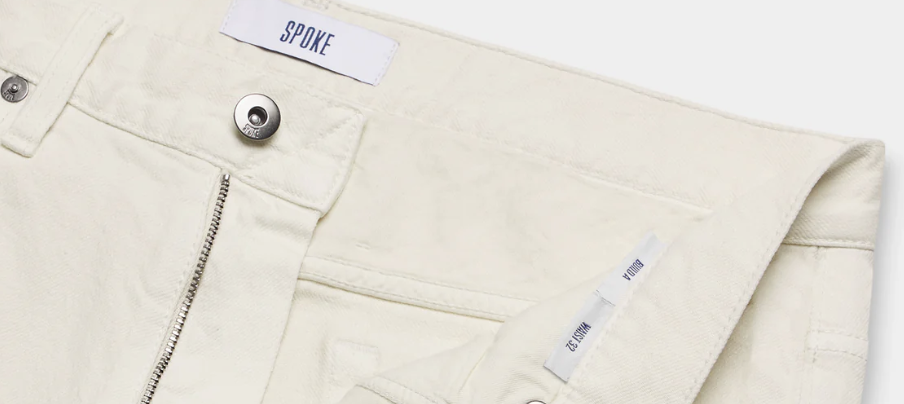
Naturally Undyed Appeal
Ecru denim is the subtly elegant cousin of classic blue jeans—crafted from 100% raw, unbleached cotton that retains its natural beige tone. Ecru (pronounced “ay-kroo”) fabrics present a refined yet earthy aesthetic, where imperfections—tiny flecks, slight shade variations, and fiber knits—blossom into signature features.
Because it hasn’t been dyed or heavily processed, ecru denim embodies authenticity and sustainability. It offers a tactile sense of connection to the soil and fiber, contrasting sharply with chemically treated, mass-produced denim.
But the appeal goes beyond eco-consciousness. The warm, neutral palette of ecru denim is incredibly versatile. It instantly elevates any outfit with its clean, minimalist vibe—think tailored jackets, sleek jumpsuits, or relaxed culottes.
The texture adds depth and visual interest, making each piece feel artfully incomplete yet intentionally styled. And since it lacks dyes that fade unevenly, ecru denim ages gracefully, developing dimension over time without dramatic color shifts.
Best Ways to Style Ecru Denim
Wearing ecru denim invites a shift toward tonal dressing and textural layering. For a sharp summer look, pair ecru high-waist jeans with a crisp white tee and leather sandals. The tone-on-tone harmony creates a fresh, sophisticated canvas that works for brunch or work-from-home Zoom calls.
When temperatures dip, swap in a knit sweater in creamy ivory or caramel, adding soft footwear like suede loafers or chunky combat boots to balance the earthy palette.
Ecru denim also plays well in contrast. A navy blazer—or a charcoal moto jacket—anchors the warmth of the denim with pop of depth.
Accessorize thoughtfully: gold jewelry and camel leather bags act like visual punctuation, framing the outfit in quiet sophistication.
Beyond pants, designers offer ecru denim skirts, jackets, and shirtdresses—each piece a testament to the fabric’s ability to transcend casual jeans.
Across the board, the key is balance: let the fabric’s natural simplicity shine by keeping your silhouette uncluttered and your accessories refined.
7. Bull Denim
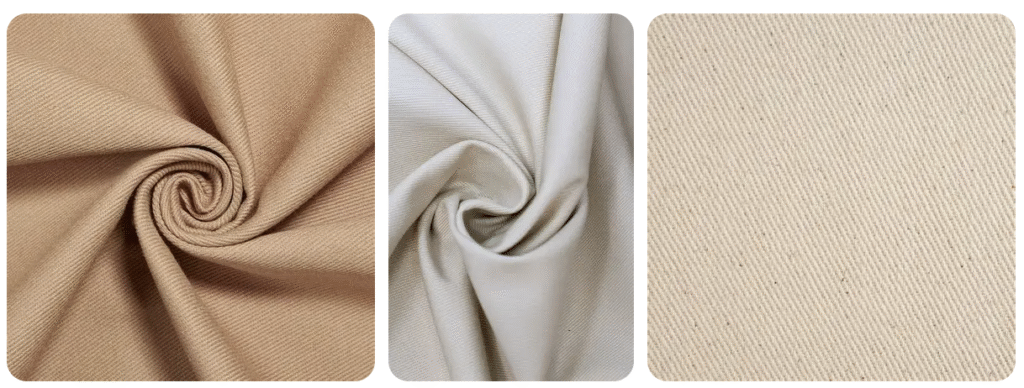
Heaviness and Durability Features
Bull denim is built like armor—heavy, thick, and nearly indestructible. Woven from a robust blend of heavyweight cottons (sometimes exceeding 16 oz), it’s engineered to endure harsh conditions—think saddle blankets, upholstery, and industrial workwear.
The weave is tighter and denser than standard jeans denim, giving it a surreal rigidity and a subtle sheen that speaks of its utilitarian origins.
Durability is the hallmark: bull denim resists abrasion, tearing, and friction. If you treat standard 12 oz denim as garden-variety workwear, bull denim is for the trenches: construction zones, mechanical workshops, or rugged outdoor expeditions.
Its weight gives structure—jackets stand upright, trousers hold their form, and accessories (like bags and aprons) maintain shape even under heavy use.
Applications in Fashion and Furniture
While bull denim’s roots are undeniably functional, contemporary designers have tapped into its raw appeal. Think artisan denim jackets with sculptural collars or wide-leg work pants that drape without collapsing.
When styled with softer fabrics—linen tops, wool sweaters—the juxtaposition becomes visually arresting: the tension between rigid denim and fluid textures creates depth.
In interior design, bull denim thrives too. Upholstered lounge chairs, ottomans, or cushion covers in bull denim add a subtle rugged charm to modern spaces—perfect for lofts, studios, or minimalist or industrial-themed homes.
The fabric withstands pet claws, spills, and daily wear, aging beautifully with patina rather than degrading. It’s heavy, yes—but that’s also part of the appeal: bull denim pieces feel substantial, grounded, and enduring.
8. Poly Denim

Synthetic Twist on Traditional Fabric
Poly (polyester) denim, often blended with cotton, offers a high-tech twist on the classic denim look. These blends can include 30–50% synthetic fiber, delivering finishes that are wrinkle-resistant, fade-proof, and fast-drying.
Poly adds resilience—like resistance to shrinkage, mildew, and environmental wear—without looking overtly synthetic. Instead, you get a crisp, smooth drape that mirrors the look of cotton denim but with enhanced performance.
Initially popular in the 1970s, poly denim faded with the rise of natural fibers—but has since made a comeback among athleisure brands and eco-conscious manufacturers innovating with recycled polyester.
Modern poly denim can mimic stretch, cable-knit flexibility, and weather resistance, all while offering denim’s aesthetic. It’s a chameleon—equally suited for functional jackets, performance-enhanced jeans, or soft-structure overshirts.
Use Cases and Advantages
Poly denim is ideal if you want durable, easy-care clothing without daily high-maintenance. Airport travelers, delivery drivers, outdoor hobbyists, or parents appreciate the machine-wash-and-go simplicity.
Offices or apartments benefit too: poly denim curtains, tablecloths, or cushion covers resist wrinkles and spills with no ironing required.
Design-wise, poly denim supports technical finishes—water-repellency, non-iron coatings, UV protection, reflective weaves—without sacrificing familiarity. Style it like cotton denim: black poly jean trousers look as sharp as wool with loafers; poly denim overshirts mimic leather utility shirts; poly denim jackets top off casual suits with texture. Plus, sourcing recycled polyester adds eco-cred—you’re part of the regeneration movement.
9. Slub Denim

Unique Texture and Weave Patterns
Slub denim is the artisanal rebel of the denim world, known for its thick-and-thin yarn pattern and uneven surface.
Spun with intentional irregularities—slubs—it crafts a fabric with visual quirks: bumpy lines, uneven die absorption, and tactile depth. One glance reveals its handwoven soul; one touch celebrates its natural complexity.
Unlike perfectly charted denim twill, slub denim breathes with imperfection—which becomes its charm. It ranges from subtle pebbles to pronounced ribbing, depending on the slub’s frequency and fiber thickness.
As light hits the slubs, shadows and highlights dance across the fabric’s surface, giving it a three-dimensional quality often compared to linen or silk slub yarns.
Why Slub Denim Stands Out
Slub denim is perfect for casual yet thoughtfully crafted design. Think Sunday shirts, casual jackets, or relaxed-fit jeans where texture tells the story. It matches linen shorts in summer or rough-ground leather boots in autumn, riding the seasonal line between rugged and refined.
Beyond casual wear, slub denim has crept into tailored territory. Soft blazer cut from slub denim drapes differently than smooth suiting—structured but not stiff. It’s a statement of relaxed sophistication. Keeping colors simple—black, indigo, charcoal—accentuates slub’s texture.
Slub denim invitations nuance: highlight it with minimal hardware, raw hems, and natural dye palettes. The outcome? Versatile wardrobe staples that stand apart without shouting.
10. Colored Denim

Breaking the Blue Barrier
Colored denim breaks denim’s blue uniform with hues spanning mustards, emeralds, burgundies, and blushes.
These dyes—reactive, pigment, or natural—adhere to cotton fibers differently than indigo, creating saturated or pastel finishes that express personality and mood. Colored jeans once felt avant-garde, but now they serve as staples in contemporary wardrobes.
Manufacturers pay careful attention to colorfastness, so colors don’t bleed or fade into skin and socks. Many lines offer dip-dyed or garment-washed finishes that feel as broken-in as indigo denim, complete with slight fades and lived-in touch. The result: bold yet accessible color denim that’s ready for everyday styling.
How to Wear Colored Denim with Confidence
Colored denim plays well when anchored with neutral or tonal companions. Want to go bold? Pair burgundy jeans with a black leather biker jacket and crisp white tee—contrast with purpose. Feeling subtle?
Mustard cropped pants with beige knit and white sneakers whisper confidence effortlessly.
Colored denim also offers seasonal flair: mint or blush in spring signals freshness, while olive or rust in autumn echoes nature’s palette. Mix textures (denim with suede or corduroy) to build layers without adding visual chaos.
And don’t be afraid: when colored denim is cut well—proper inseam, flattering rise—it transcends novelty into wardrobe enduring.
How to Choose the Right Denim Fabric for You
Matching Fabric with Lifestyle
Choosing the right denim isn’t about chasing trends—it’s about matching fabric features to your everyday routine. For example, if you’re a commuter or active professional, stretch denim offers mobility without sacrificing polish.
Love heritage craftsmanship? Go with selvedge or raw denim. These types reward patience, developing fades and character unique to your life’s movements.
If comfort is king, poly denim or lightweight slub varieties deliver breathable, flexible ease—ideal for long days and casual dressing. Meanwhile, bull denim suits those with hands-on jobs or who want sturdy outerwear that stands up to weather, work, or wear.
For the style-obsessed? Colored and acid wash denim lets you flex your personality, whether that’s bold, retro, or trend-forward.
Ask yourself a few key questions:
- How often will I wear this? (Daily = comfort and durability over statement.)
- Do I like pieces that age and fade, or keep their look?
- Do I need structure or softness?
- What’s my go-to footwear and topwear style?
Your answers will point you to the perfect match. And remember, owning multiple denim types for different moods and functions is not just allowed—it’s encouraged.
Longevity and Care Tips
Want your denim to last? Treat it with respect. For raw and selvedge denim, avoid frequent washing—spot clean when needed, and hand wash inside-out in cold water to preserve color and texture. Use a denim-safe detergent and skip the dryer; instead, hang dry to avoid shrinkage.
Stretch denim needs a bit more TLC—wash cold on a gentle cycle and avoid over-wearing without giving the fabric time to rebound. With poly blends, you’re in luck: they’re low-maintenance, resisting wrinkles and retaining shape even with weekly washes.
For all types, rotate your pairs to reduce stress on seams and knees. Store flat or hang them by the waistband to prevent creases. And above all, don’t fear the fade—it’s a badge of authenticity, a map of the places you’ve been and the moments you’ve lived.
Conclusion
Denim isn’t just a fabric—it’s a fashion language spoken across generations, geographies, and subcultures. From the rugged heritage of raw and selvedge denim to the technical innovation of poly and stretch blends, there’s a denim type for every personality and purpose.
Whether you’re a minimalist favoring ecru tones or an ‘80s throwback fan obsessed with acid wash, understanding denim’s diversity helps you build a more intentional wardrobe. It lets you shop smarter, wear longer, and look better—whether you’re dressing for comfort, performance, or making a statement.
So go beyond “just jeans.” Invest in quality. Experiment with color, texture, and weight. And let your denim tell a story as unique as you are.
FAQs Denim Fabric Types
What is the most durable type of denim?
Bull denim is widely considered the most durable due to its heavyweight weave and tight construction. It’s built to withstand rugged conditions and heavy use, making it ideal for workwear or long-lasting furniture.
Is raw denim better than stretch denim?
That depends on your needs. Raw denim offers authenticity and a custom fit over time but requires patience and care. Stretch denim is better for comfort and flexibility, especially for active lifestyles or slim fits.
How do I know if denim is selvedge?
Check the outseam of the jeans. If you see a clean, tightly woven edge with a distinct colored line (usually red or white), you’re looking at selvedge denim. It’s typically more rigid and made on vintage looms.
Can I wear acid wash denim in formal settings?
It’s tricky, but not impossible. If styled right—like pairing acid wash jeans with a structured blazer and minimalist shoes—you can achieve a fashion-forward smart casual look. Just avoid overdoing the retro vibe.
What’s the easiest denim type to maintain?
Poly denim and stretch blends are the easiest. They resist wrinkles, hold their shape, and wash well without shrinking or fading. Perfect for anyone who doesn’t want to fuss over fabric care.

